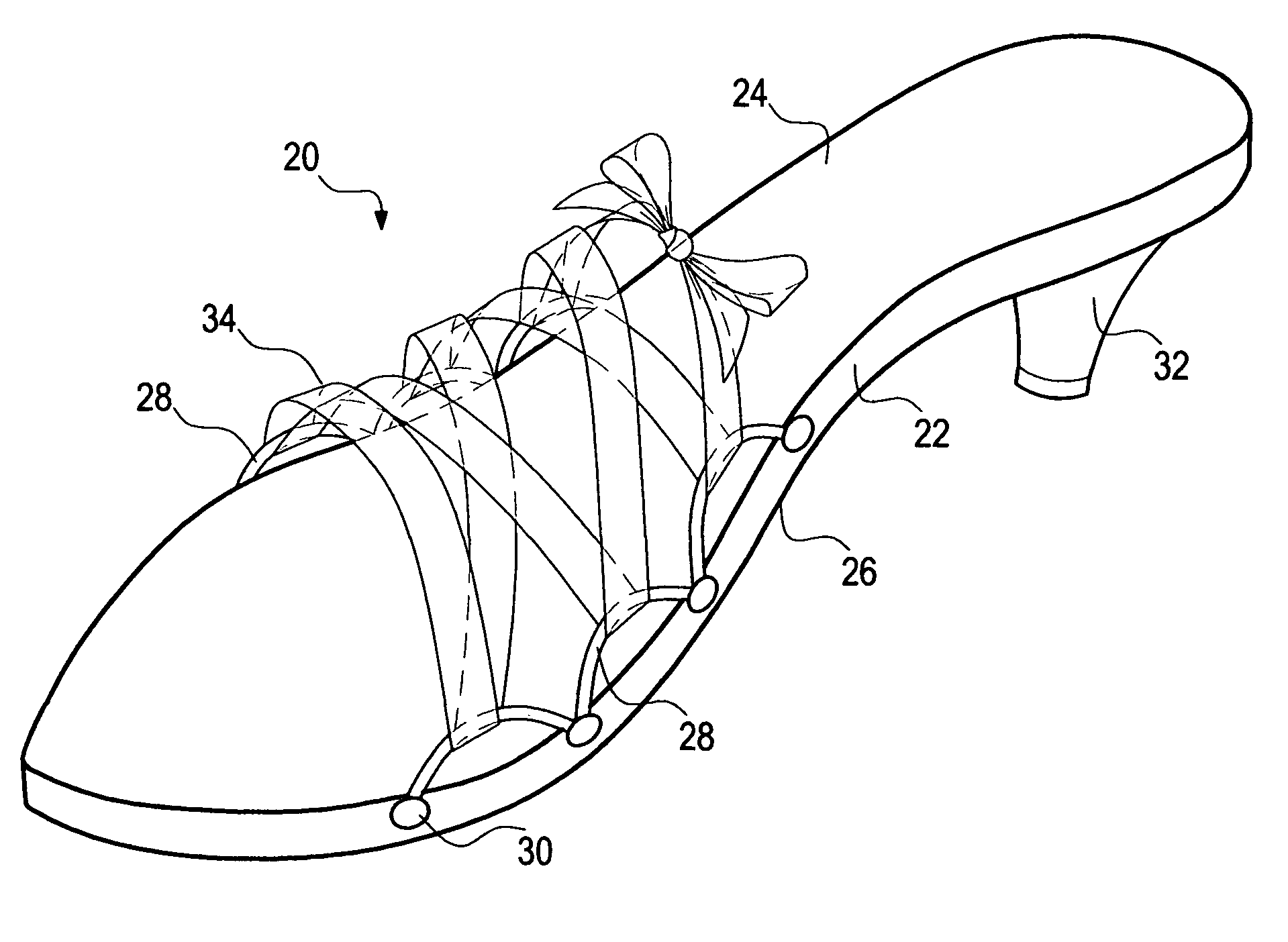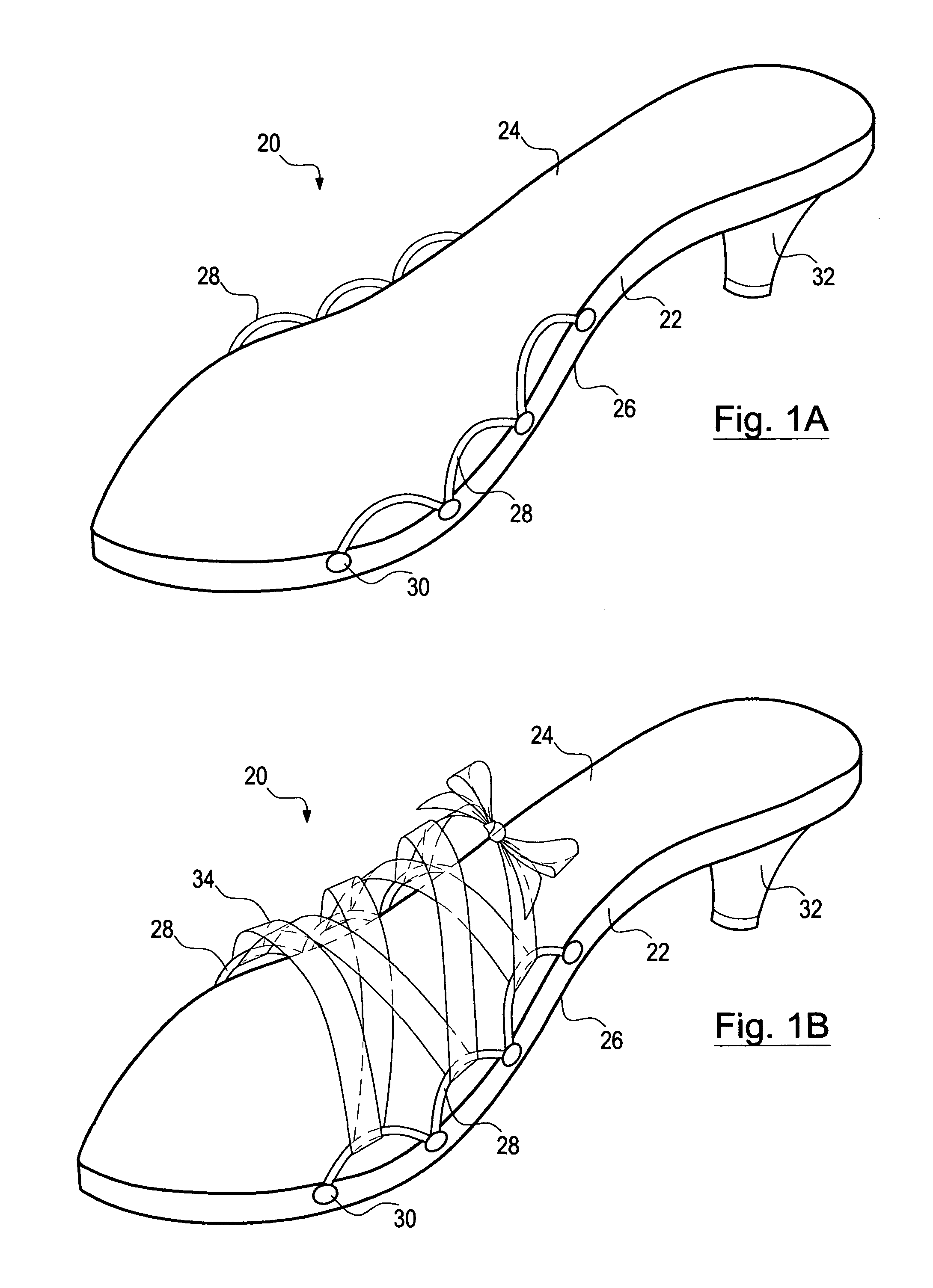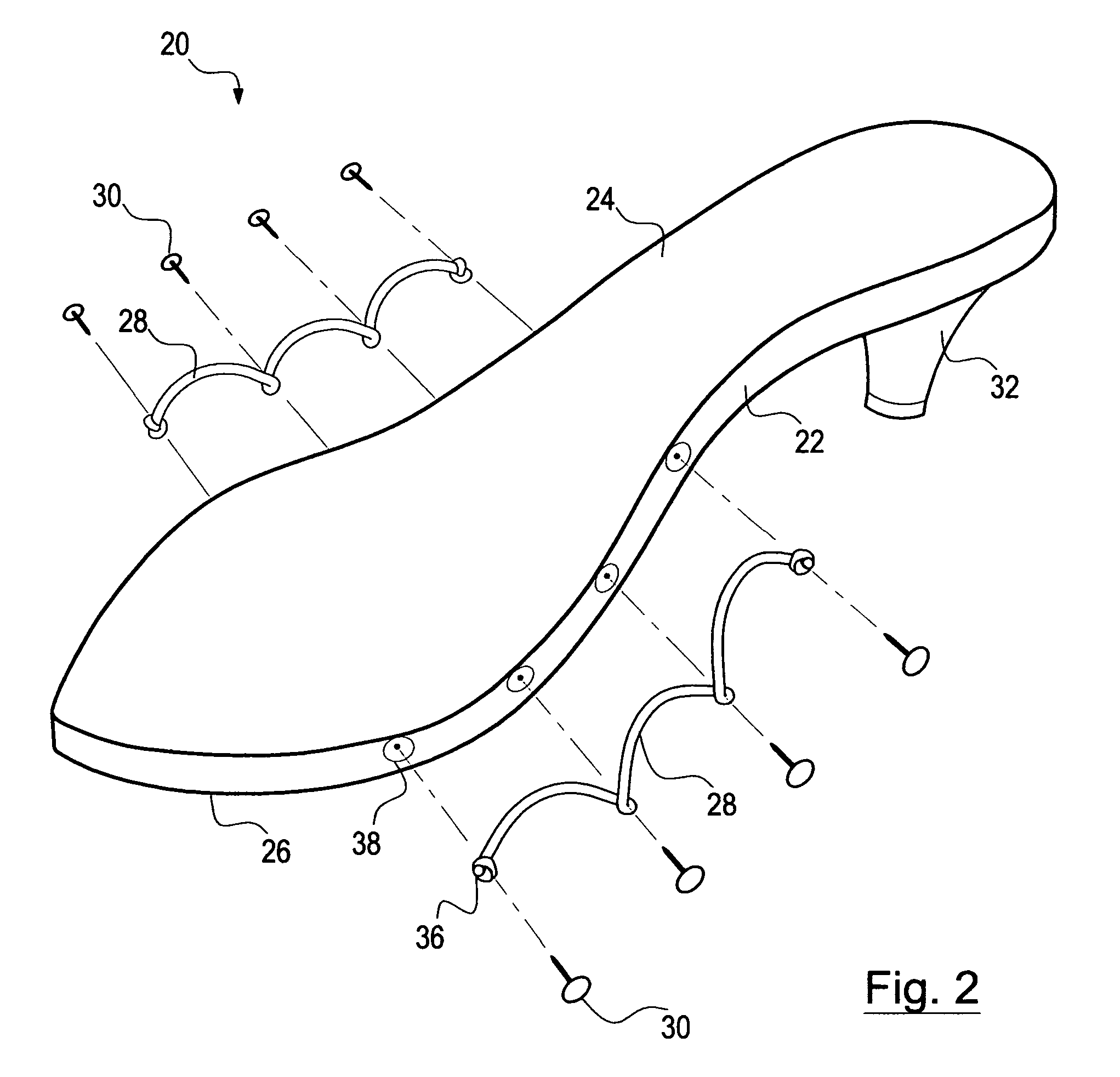Shoe with elastic bindings to receive interchangeable straps
- Summary
- Abstract
- Description
- Claims
- Application Information
AI Technical Summary
Benefits of technology
Problems solved by technology
Method used
Image
Examples
embodiment
Preferred Embodiment
[0050]Referring to FIG. 1B (perspective view), a strap 34 is laced through the elastic bindings 28 to form the shoe upper and to secure the wearer's foot to the sole of the shoe 22. A common, well-known lacing method is illustrated: a crisscross pattern culminating with a bow and / or knot, as is typically employed with athletic shoes. To tie the straps in such a manner results in a slip-on or “mule” style shoe. It should be understood that the strap may be laced through the elastic bindings 28 in any of a wide variety of patterns per the preference of the wearer. Additionally, the strap 34 may be of any usable length and material per the preference of the wearer, and may be tied as firmly or loosely as preferred in order to create a custom fit
[0051]FIGS. 7A, 7B, and 7C (all perspective views), illustrate three variations of the myriad ways the shoes may be tied onto the feet by the wearer. FIG. 7A shows a strap 40 laced through the elastic bindings as illustrated ...
PUM
 Login to View More
Login to View More Abstract
Description
Claims
Application Information
 Login to View More
Login to View More - R&D
- Intellectual Property
- Life Sciences
- Materials
- Tech Scout
- Unparalleled Data Quality
- Higher Quality Content
- 60% Fewer Hallucinations
Browse by: Latest US Patents, China's latest patents, Technical Efficacy Thesaurus, Application Domain, Technology Topic, Popular Technical Reports.
© 2025 PatSnap. All rights reserved.Legal|Privacy policy|Modern Slavery Act Transparency Statement|Sitemap|About US| Contact US: help@patsnap.com



